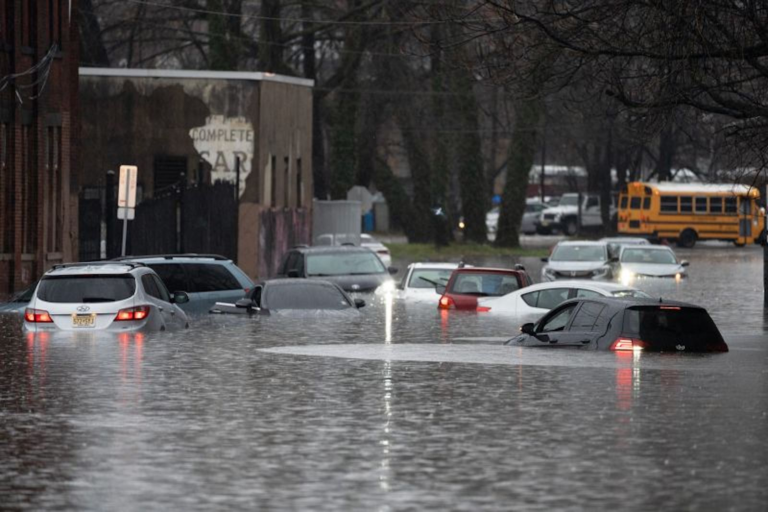At least five people have died after the powerful storm caused flooding and travel hazards on the east coast and left hundreds of thousands of homes and businesses without power in the northeast, which is bracing for freezing temperatures. and accumulating snow on Tuesday.
The storm system cut a turbulent path along the East Coast, killing a Pennsylvania man and a South Carolina woman, both in their 70s, after their vehicles were submerged in high water.
A person in upstate New York also died Monday after driving on a flooded road and his car was swept away by the river. The driver was found dead about two hours later when emergency responders arrived at the vehicle.
Two more deaths were reported in Maine and Massachusetts.
When the storm hit the northeast on Monday, it dumped 50 to 125mm of rain across the region in a 24-hour period.
Heavy rains caused flooding that swamped cars, stranded drivers on flooded roads in New Jersey and Connecticut, and prompted water rescues in New Hampshire and Maine.
Farmington, Maine, “is a little bit of an island right now,” City Manager Erica LaCroix told CNN Tuesday morning, after severe flooding hit the area.
The water began receding Tuesday, although many roads remained impassable, LaCroix said.
Fire crews “went door-to-door in the areas of the city that were most vulnerable to flooding” Monday night “and asked residents to evacuate, but they didn't have to,” LaCroix said.
Officials are advising the public not to attempt to travel to or through Farmington.
The weather affected seasonal travel on Monday, with more than 1,200 flights delayed and 500 canceled to and from airports in New York, Boston and Washington.
Amtrak suspended all rail operations in Vermont on Monday, state Transportation Secretary Joe Flynn said.
It could take several days to fully restore power to some Maine residents, warned Central Maine Power, a utility that serves more than 600,000 customers.
The conditions led to school closings or delays in many areas in Maine and New Hampshire.
Schools in Paterson, New Jersey, remained closed until further notice after Mayor Andre Sayegh declared a state of emergency Monday afternoon in anticipation of flooding from the rising Passaic River.
Flooding in the region is expected to be the worst in at least a decade.
In nearby Little Falls, the mayor urged residents to evacuate before midnight Monday because of the threat of flooding, which authorities had previously warned could be “catastrophic.”
“Residents stay in their homes at their own risk,” said Mayor James Belford Damiano. “Flooding can cause hazards that prevent rescue even at night.”
The snow is coming
Cold air behind the storm led to winter weather warnings for 10 states in the Great Lakes, Appalachia and the Inland Northeast.
Up to a foot of snow fell in parts of northwestern New York and Ohio, as well as central Pennsylvania and West Virginia, where winter storm warnings were in effect Tuesday morning. Wind gusts of up to 80 km/h are estimated in the affected area.
Surrounding areas could get 1 to 6 inches of snow, while affected areas around the Great Lakes are forecast to get up to 7 inches, according to the weather service.



